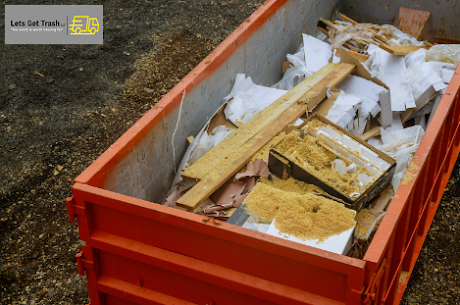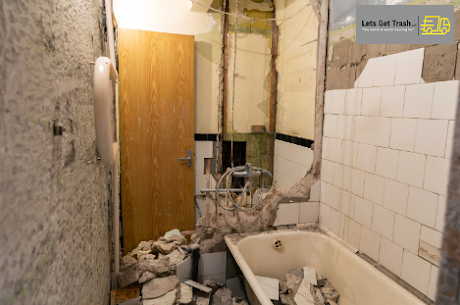Philadelphia, known for its historic landmarks and burgeoning modern skyline, is a city constantly under construction. From revitalizing old buildings to erecting new skyscrapers, the construction industry in Philadelphia is booming. However, amidst the hustle and bustle of construction, one crucial aspect often overlooked is cleanup. The process of tidying up after construction is vital not only for aesthetics but also for safety and environmental preservation.
The Challenge of Construction Cleanup

Construction sites are notorious for their messiness. Dust, debris, and waste materials accumulate rapidly during the building process. Neglecting to address this buildup not only poses safety hazards for workers and the public but also detracts from the overall appeal of the cityscape. In a city like Philadelphia, where architectural beauty is celebrated, maintaining pristine surroundings is paramount.
The Challenge of Construction Cleanup lies in the sheer magnitude of debris and waste generated during the building process. Construction sites are dynamic environments where materials are constantly being moved, assembled, and demolished. This constant activity results in a wide array of waste, including rubble, sawdust, packaging materials, and discarded equipment.
The Evolution of Construction Cleanup Techniques
Fortunately, the construction cleanup industry has evolved significantly over the years, employing innovative techniques and technologies to tackle even the most daunting cleanup challenges. Gone are the days of rudimentary brooms and shovels; today, specialized equipment such as industrial vacuums, pressure washers, and debris removal systems streamline the cleanup process. Moreover, a growing emphasis on sustainability has prompted construction cleanup companies to adopt eco-friendly practices. Recycling and proper disposal of construction waste have become standard procedures, minimizing the environmental impact of construction projects and contributing to a cleaner, greener Philadelphia.
One of the most significant advancements in construction cleanup has been the development and widespread adoption of specialized equipment and machinery. Industrial vacuums equipped with high-powered suction capabilities are now commonplace on construction sites, allowing for the rapid removal of dust, dirt, and debris from floors, walls, and ceilings.
The Importance of Professional Cleanup Services

While some construction companies may attempt to handle cleanup in-house, the complexity and scale of the task often necessitate the expertise of professional cleanup services. Companies specializing in construction cleanup possess the necessary skills, equipment, and manpower to efficiently restore construction sites to their pre-construction state. Moreover, outsourcing cleanup allows construction companies to focus on their core competencies, optimizing productivity and project timelines. By entrusting cleanup to experienced professionals, construction firms can ensure that their projects adhere to regulatory standards and meet the expectations of clients and the community.
Spotlight on Philadelphia's Cleanup Innovators
In Philadelphia, several cleanup companies stand out for their commitment to excellence and innovation. These companies understand the unique challenges posed by the city’s diverse construction landscape and have tailored their services accordingly. Whether it’s restoring historic buildings in Old City or clearing debris from new high-rise developments in Center City, these cleanup specialists are dedicated to preserving Philadelphia’s architectural heritage while embracing modern techniques and technologies.
Looking Towards a Cleaner Future
As Philadelphia continues to grow and evolve, the importance of construction cleanup cannot be overstated. By investing in professional cleanup services and embracing sustainable practices, construction companies can contribute to a cleaner, safer, and more vibrant city.
Waste Reduction and Recycling: Implementing waste management plans that prioritize the reduction, reuse, and recycling of construction materials. This includes segregating and recycling materials such as concrete, wood, metals, and plastics to divert them from landfills and promote a circular economy.
Green Building Practices: Embracing green building principles such as efficient design, energy conservation, and use of sustainable materials. Integrating features like energy-efficient HVAC systems, green roofs, and low-impact landscaping not only reduces environmental footprint but also enhances the long-term sustainability and performance of buildings.
Construction Debris Management: Employing best practices for managing construction debris and preventing pollution of air, soil, and water during cleanup activities. This involves proper containment, handling, and disposal of hazardous materials, as well as implementing erosion and sediment control measures to prevent soil erosion and runoff.
Advanced Cleanup Technologies: Leveraging innovative technologies such as robotic cleaners, drones, and autonomous vehicles for efficient and eco-friendly cleanup operations. These technologies can improve productivity, reduce labor costs, and minimize environmental disturbance by optimizing cleanup processes.
Natural Resource Conservation: Protecting natural resources such as water and energy by implementing water-efficient fixtures, rainwater harvesting systems, and renewable energy solutions in construction cleanup operations. By reducing resource consumption and promoting conservation, construction projects can minimize their environmental footprint.
Community Engagement and Education: Engaging with local communities and stakeholders to raise awareness about the importance of sustainable construction practices and the benefits of cleaner cleanup methods. Providing training and educational programs for construction workers and contractors can foster a culture of environmental responsibility and promote widespread adoption of sustainable practices.
Regulatory Compliance and Certification: Ensuring compliance with environmental regulations and obtaining certifications such as LEED (Leadership in Energy and Environmental Design) for green building projects. Adhering to strict environmental standards and seeking third-party certification can demonstrate a commitment to sustainability and differentiate construction cleanup efforts.
Continuous Improvement and Innovation: Encouraging ongoing research, development, and innovation to advance cleaner and more sustainable construction cleanup technologies and practices. Collaborating with industry partners, academic institutions, and government agencies can drive progress towards achieving cleaner and more environmentally responsible construction practices.
By integrating these strategies into construction cleanup processes, stakeholders can contribute to a cleaner future by reducing environmental impacts, conserving resources, and promoting sustainability in the construction industry.
Conclusion
Spotless skyscrapers are not merely a testament to architectural prowess; they are a reflection of a city’s commitment to excellence in every aspect of its development. With the right approach to construction cleanup, Philadelphia can maintain its status as a beacon of innovation and progress for years to come. Contact us today at Let’s Get Trash to ensure your construction projects contribute to Philadelphia’s pristine skyline.






